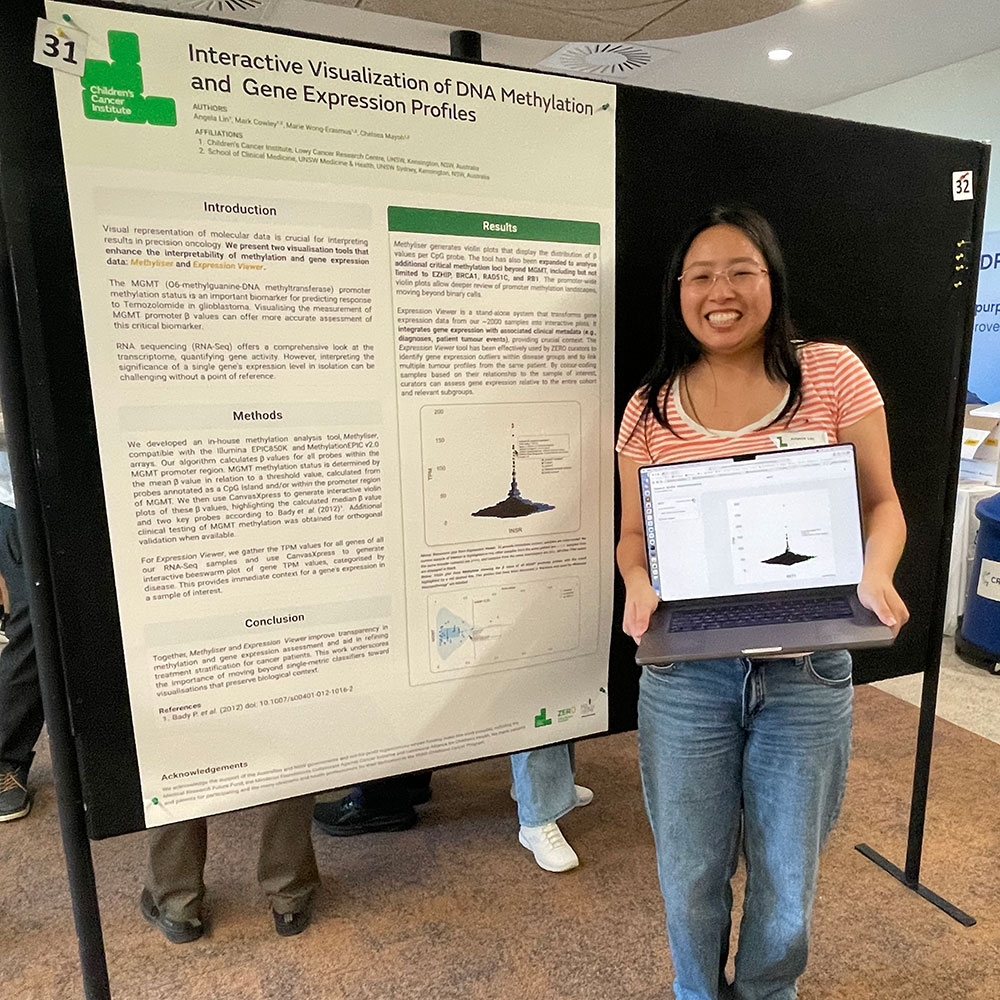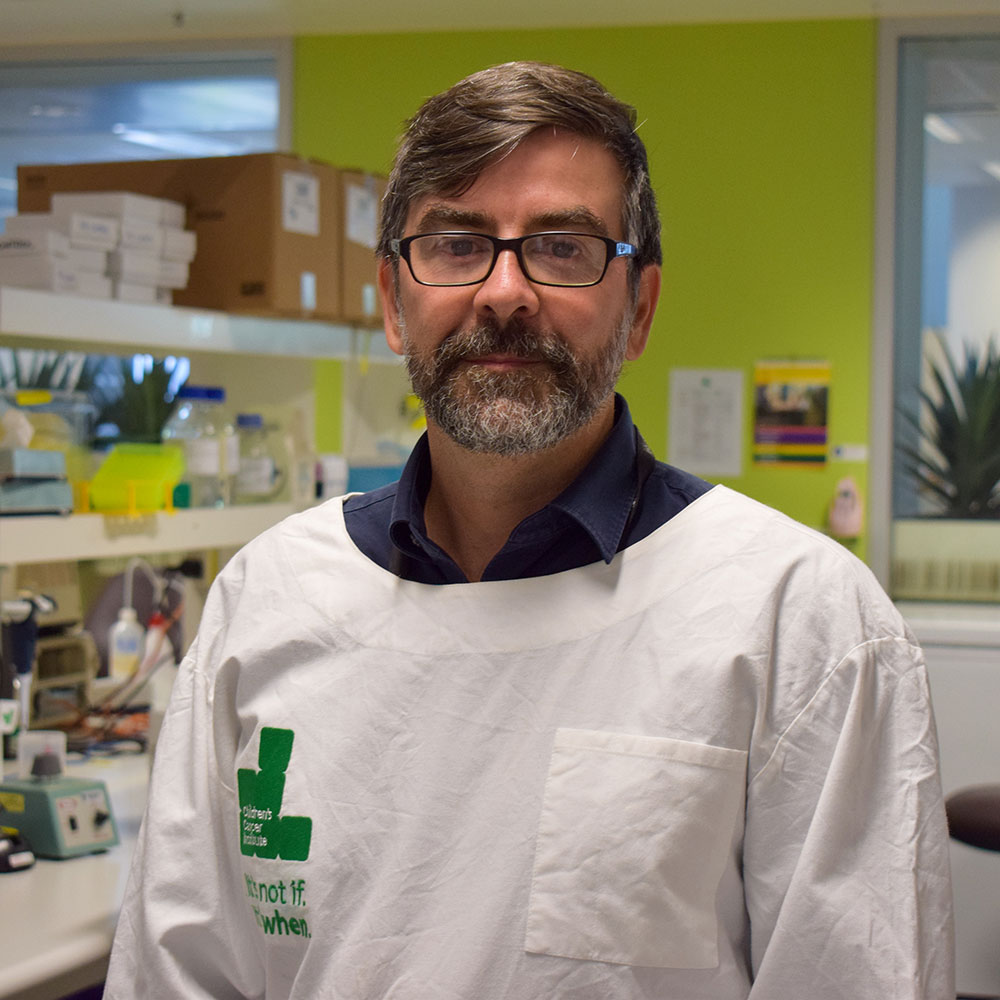Neuroblastoma is the most common solid tumour in young children, with average age of diagnosis 2 years old. The survival rate for high-risk neuroblastoma is about 50%. Over 20 babies and toddlers will die from this disease in Australia this year.
Research led by Professors Michelle Haber and Murray Norris and published last month in the journal Science Translational Medicine, has identified a combination of two drugs – one old and one new – that starves neuroblastoma cells of essential nutrients called polyamines, effectively halting their growth.
Polyamines and cancer
It’s long been known that cancer cells need especially high levels of molecules called polyamines to fuel their rapid growth and spread. The cells synthesise polyamines from a substance called ornithine, using an enzyme called ODC1.
In the 1970s a drug called DFMO was discovered that blocks the activity of ODC1, thus reducing the amount of polyamines available to cells. Our researchers previously showed that adding DFMO to chemotherapy drugs used to treat neuroblastoma makes those drugs more effective. Based on their findings, a clinical trial is currently underway at the Kids Cancer Centre, Sydney Children’s Hospital, and in 14 leading US children’s cancer centres.
If you can’t make it, take it
Because polyamines are so essential for their growth, cancer cells have a back-up plan to ensure a constant supply. If they can’t make enough, they use special ‘transporter’ proteins in their outer membrane to take up polyamines from their surroundings. For the first time, our researchers have identified the key player in polyamine uptake in neuroblastoma cells – a transporter called SLC3A2.

The team found that if they treated neuroblastoma cells with DFMO to block the synthesis of polyamines, the cells responded by increasing their levels of SLC3A2 and taking up more polyamines from outside.
What was needed was a drug to block this polyamine uptake. Combining such a drug with DFMO – simultaneously inhibiting polyamine synthesis and uptake – should effectively starve cells of polyamines.
A potent polyamine transport inhibitor: AMXT 1501
The solution was provided by a collaboration with the pharmaceutical company Aminex Therapeutics, which specialises in depleting polyamines from cancer cells. Dr Mark Burns, President and Chief Scientific Officer at Aminex and an author on the Science Translational Medicine paper, joined the project, supplying a newly developed, potent polyamine transport inhibitor called AMXT 1501.
When tested, AMXT 1501 completely blocked the uptake of a polyamine called spermidine in multiple neuroblastoma cell lines. Importantly, when added in conjunction with DFMO, AMXT 1501 prevented the compensatory increase in polyamine uptake, thus keeping polyamine levels extremely low (see top image).
But would this affect cell growth? The answer was yes. While DFMO or AMXT 1501 alone substantially reduced the growth of neuroblastoma cells, together the two drugs were much more effective.
 Clusters of neuroblastoma cells in the lab, after being treated with polyamine synthesis inhibitor DFMO, polyamine transport inhibitor AMXT 1501, or both drugs together
Clusters of neuroblastoma cells in the lab, after being treated with polyamine synthesis inhibitor DFMO, polyamine transport inhibitor AMXT 1501, or both drugs together
“This exciting new treatment approach warrants clinical investigation in children with MYCN-driven high-risk neuroblastoma, and potentially other cancers as well.”
Promising pre-clinical results
Because potential new treatments like this one must be tested in pre-clinical models before they can be given to patients, the combination of DFMO and AMXT 1501 was tested in a mouse model of neuroblastoma.
When mice with established tumours received DFMO and AMXT 1501, they lived significantly longer than control mice. The result was the same in a second model, in which mice received human neuroblastoma cells.
“This exciting new treatment approach warrants clinical investigation in children with MYCN-driven high-risk neuroblastoma, and potentially other cancers as well,” said Professor Haber.
“While other treatment approaches in clinical evaluation are designed to inhibit polyamine synthesis, they do not impact polyamine uptake from the microenvironment. Our study suggests that both polyamine synthesis and polyamine uptake need to be inhibited for therapy to be effective.”
What’s next?
The DFMO/AMXT 1501 combination is currently being tested in the US in adult patients with a broad range of cancers, in a Phase 1 clinical trial run by Aminex Therapeutics.
Associate Professor David Ziegler, who was involved in this study, is Head of the Clinical Trials Program at the Kids Cancer Centre at Sydney Children’s Hospital, Randwick.
“We are now working with Aminex to develop a children’s formulation of AMXT 1501 and once the initial adult trial is complete, we plan to open a clinical trial for children with the most aggressive cancers,” he said.
Read the research article.
Drs Laura Gamble and Stefania Purgato are joint first authors of the study. Joining Haber, Norris and Burns as a senior co-author is Professor Giovanni Perini from the University of Bologna, Italy.
Top image: 1) Cells produce polyamines from the amino acid ornithine, but can also take up dietary polyamines from outside the cell; 2) DFMO blocks polyamine production, but cells increase their polyamine uptake to compensate; 3) AMXT 1501 blocks polyamine uptake, and in combination with DFMO blocking polyamine production, the two drugs together deplete intracellular polyamine levels. ODC1: ornithine decarboxylase, enzyme required for polyamine synthesis.
All images are from the Science Translational Medicine article: https://doi.org/10.1126/scitranslmed.aau1099















